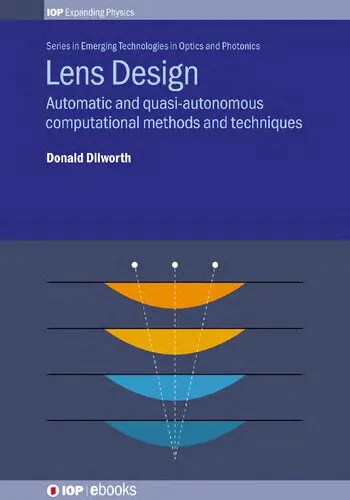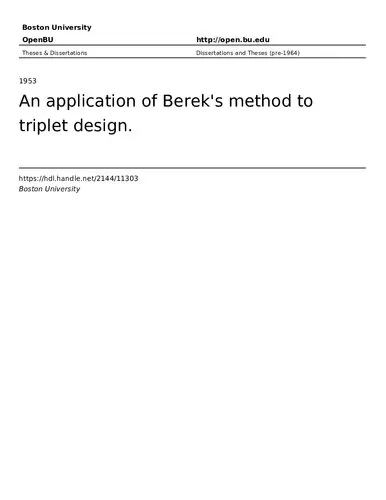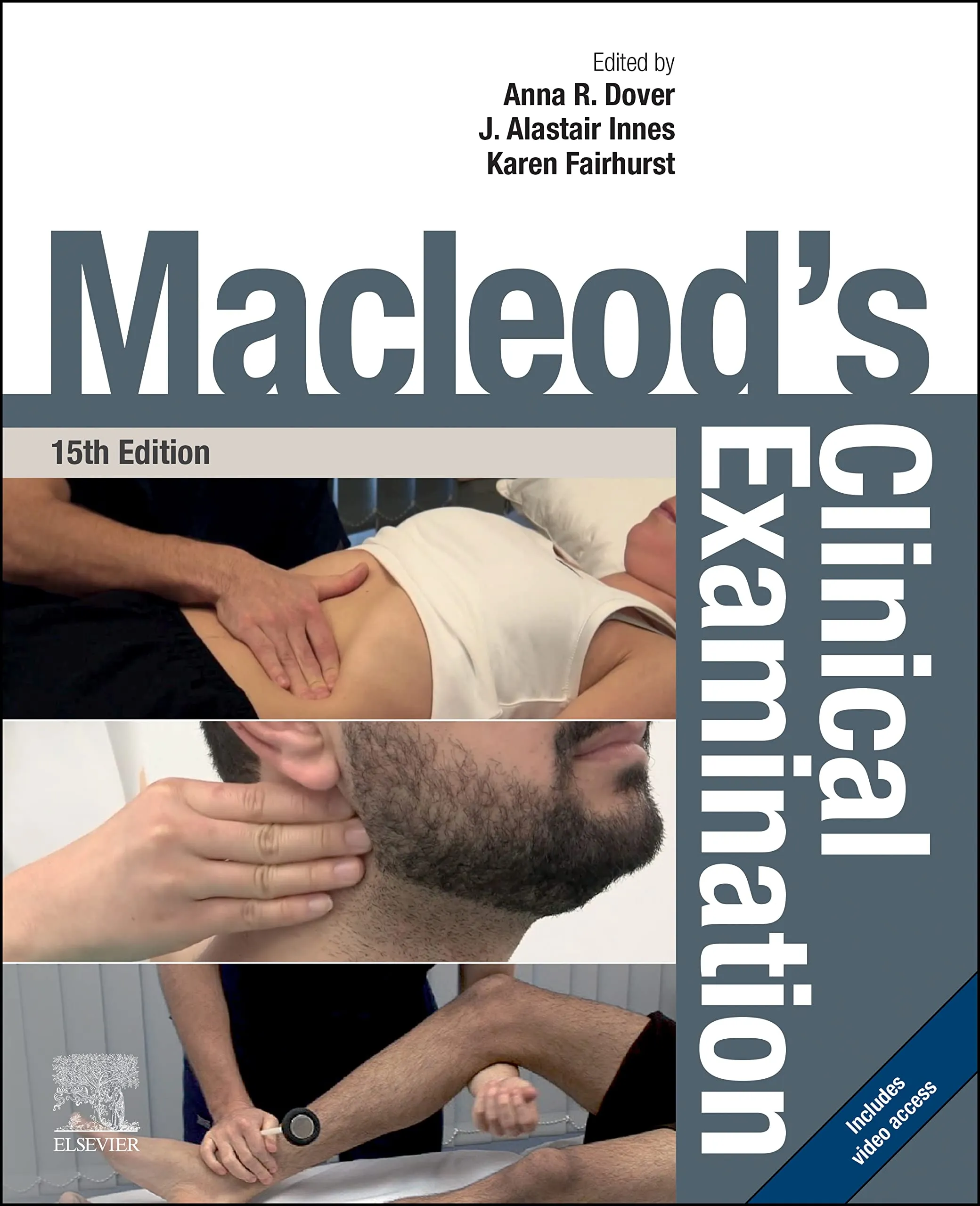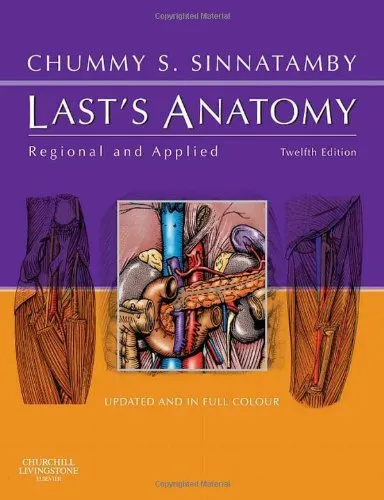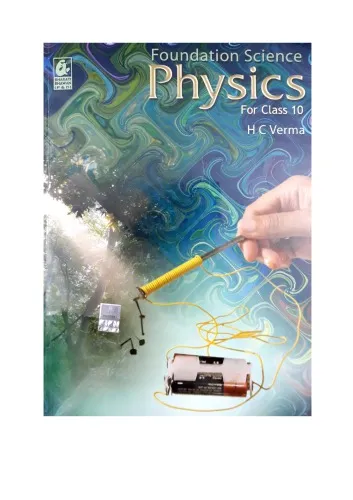Lens Design: Automatic and Quasi-Autonomous Computational Methods and Techniques (IPH001)
4.5
بر اساس نظر کاربران

شما میتونید سوالاتتون در باره کتاب رو از هوش مصنوعیش بعد از ورود بپرسید
هر دانلود یا پرسش از هوش مصنوعی 2 امتیاز لازم دارد، برای بدست آوردن امتیاز رایگان، به صفحه ی راهنمای امتیازات سر بزنید و یک سری کار ارزشمند انجام بدینکتاب های مرتبط:
خلاصه تحلیلی کتاب
کتاب Lens Design: Automatic and Quasi-Autonomous Computational Methods and Techniques (IPH001) اثری تخصصی در حوزه طراحی اپتیکی است که نگاه عمیقی به روشهای محاسباتی پیشرفته برای توسعه و بهینهسازی سیستمهای نوری ارائه میکند. این کتاب، مسیر تحول از طراحی دستی لنزها به سمت بهرهگیری از روشهای خودکار و شبهخودکار را بررسی کرده و با تکیه بر تجربه و تحلیلهای دقیق، چارچوبی علمی برای مهندسان و پژوهشگران فراهم میآورد.
ساختار اثر بهگونهای تنظیم شده که ضمن پوشش مبانی و اصول طراحی لنز، به بررسی ابزارهای نرمافزاری و الگوریتمهای Optimization میپردازد. در این مسیر، خواننده با نمونههای واقعی، چالشهای متداول و رویکردهای حل آنها آشنا میشود. تمرکز اصلی بر پیوند بین تئوری و عمل است تا طراحی لنز به شکلی کارآمد، سریع و دقیقتر از گذشته محقق گردد.
اطلاعات جزئی مانند سال انتشار یا جوایز احتمالی اثر در منابع معتبر یافت نشد (اطلاعات نامشخص، منبع معتبر در دسترس نیست)، اما اهمیت محتوایی کتاب، آنرا به مرجعی قابل اتکا برای کسانی که در حوزه اپتیک و فوتونیک فعالیت میکنند، تبدیل کرده است.
نکات کلیدی و کاربردی
یکی از شاخصههای اصلی این کتاب، تمرکز ویژه بر Automatic Lens Design و Quasi-Autonomous Computational Techniques است که در دنیای امروز، نقش مهمی در کاهش زمان طراحی و افزایش دقت نتایج دارند. نویسنده با تحلیل گامبهگام فرآیندهای طراحی، به خواننده اجازه میدهد تا نهتنها ابزارها را بهکار گیرد بلکه منطق پشت هر روش را نیز درک کند.
از دیگر نقاط برجسته، بررسی محدودیتهای فیزیکی و نرمافزاری در روند طراحی است؛ بخشی که اغلب نادیده گرفته میشود اما در موفقیت یک پروژه حیاتی است. این کتاب همچنین با ارائه مثالهای متنوع، به طراحان کمک میکند تا بین استفاده از روشهای کلاسیک و تکنیکهای نوین تعادل برقرار کنند.
خواندن این کتاب برای مهندسان اپتیک، فعالان حوزه تصویربرداری، و دانشجویان کارشناسی ارشد و دکتری در رشتههای مرتبط، فرصتی است برای گسترش دانش و مهارتهای عملی در استفاده از ابزارهای پیشرفته و چارچوبهای تصمیمگیری در طراحی سیستمهای اپتیکی.
نقلقولهای ماندگار
این اثر حاوی بینشهای ارزشمندی است که نه تنها بعد علمی بلکه فلسفه مهندسی اپتیک را نیز بازتاب میدهد. در ادامه، بخشهایی از گفتههای مهم در کتاب یا برداشتهای رایج نقل شده است که میتواند الهامبخش خوانندگان باشد.
«هر سیستمی که نتواند خود را با محدودیتهای فیزیکی وفق دهد، محکوم به شکست است؛ حتی اگر از پیشرفتهترین الگوریتمها بهره گیرد.» نامشخص
«طراحی لنز تنها یک فرآیند ریاضی نیست، بلکه تعادلی میان علم، هنر و شناخت کاربردهاست.» نامشخص
چرا این کتاب اهمیت دارد
در دنیای امروز که نیاز به سیستمهای نوری دقیق و کارآمد در صنایع مختلف مانند پزشکی، هوافضا، و مخابرات بیش از پیش احساس میشود، داشتن یک منبع مرجع که بهطور جامع به مباحث طراحی خودکار و نیمهخودکار لنز میپردازد، ارزشمند است. این کتاب با ارزیابی دقیق Computational Methods در کنار تجربه عملی، پلی میان وضعیت فعلی و آینده طراحی اپتیک ایجاد میکند.
از آنجا که بسیاری از منابع موجود یا بیش از حد تئوریک هستند یا صرفاً به جنبههای نرمافزاری میپردازند، این اثر با رویکرد متوازن خود توانسته جایگاه ویژهای در میان کتابهای مشابه کسب کند. تکرار طبیعی کلیدواژههایی همچون طراحی سیستمهای اپتیکی و الگوریتمهای بهینهسازی لنز، نشاندهنده تطبیق محتوای کتاب با نیازهای جستجوی دقیق پژوهشگران است.
Analytical Summary
In the world of optics, few areas are as technically demanding and intellectually stimulating as lens design. Lens Design: Automatic and Quasi-Autonomous Computational Methods and Techniques (IPH001) is a specialized work that delves deep into the rigorous methodologies and computational approaches used to advance modern optical systems. Written for serious readers, academic researchers, and seasoned professionals, this book provides a structured pathway through both established principles and forward-looking techniques in the design and optimization of lenses.
The text investigates how automatic algorithms and quasi-autonomous systems enable engineers to craft lenses that meet exacting performance requirements while reducing manual trial-and-error. By integrating computational lens design strategies with theoretical optics, the book bridges a critical gap for readers who seek both conceptual understanding and practical application. Each chapter builds incrementally, ensuring that readers can absorb intricate arguments while connecting them to real-world optical engineering challenges.
Secondary topics such as optical engineering and computational optimization are discussed in context with emerging industry standards, making this work relevant to ongoing advancements in camera systems, scientific instrumentation, and industrial imaging solutions. Information on specific publication year, awards, or widespread public recognition is unavailable due to the absence of reliable public sources; however, the enduring relevance of its subject matter is clear from the growing importance of automation in lens design workflows.
Key Takeaways
Readers will gain a robust and actionable understanding of how computational methods are shaping the future of lens design, with particular emphasis on automation.
The book emphasizes the interplay between algorithmic precision and engineering creativity, offering concrete methods for reducing human error and improving efficiency in the design process.
By explaining quasi-autonomous computational techniques, it equips readers to integrate machine-assisted processes into their own projects, translating theory into tangible results.
Important practical insights include recognizing when to trust fully automatic procedures and when human oversight is essential, along with strategies for iterative refinement of optical configurations.
The text stresses reproducibility, parameter sensitivity, and compatibility with various optical modelling software platforms, which ensures readers can adapt its core lessons to diverse engineering contexts.
Memorable Quotes
“Automation in lens design does not replace expertise; it enhances the engineer’s reach into the possible.” Unknown
“Quasi-autonomous computation blends human intuition with machine precision for groundbreaking optical solutions.” Unknown
“Every lens tells a story of constraints mastered and visions made clear.” Unknown
Why This Book Matters
For researchers and professionals navigating the rapidly evolving domain of optical engineering, this book serves as both a reference and a guide.
Its focus on automatic and quasi-autonomous computational methods situates it among the few resources addressing how automation is redefining product design cycles. The content is highly relevant to industries where precision optics affect performance, cost-efficiency, and innovation possibilities.
By providing deeply detailed, technically accurate discussions, it empowers readers to critically examine and integrate advanced methodologies without being overwhelmed by unnecessary complexity. In doing so, it helps foster a mindset that balances trust in computational outcomes with the interpretive skills only human practitioners can provide.
Inspiring Conclusion
In summary, Lens Design: Automatic and Quasi-Autonomous Computational Methods and Techniques (IPH001) is a vital resource for anyone intent on mastering the synthesis of human expertise with computational advancements.
Its enduring relevance for optical engineering, computational lens design, and related disciplines makes it a book worth reading, sharing, and discussing. Whether your goal is to enhance your theoretical foundation or to implement sophisticated automation in your practice, this work provides both the compass and the map to navigate the evolving terrain of modern lens design.
We invite you to engage with the ideas presented, reflect on their potential in your own projects, and join a broader conversation about how best to harness automatic and quasi-autonomous computational methods for optical innovation.
دانلود رایگان مستقیم
شما میتونید سوالاتتون در باره کتاب رو از هوش مصنوعیش بعد از ورود بپرسید
دسترسی به کتابها از طریق پلتفرمهای قانونی و کتابخانههای عمومی نه تنها از حقوق نویسندگان و ناشران حمایت میکند، بلکه به پایداری فرهنگ کتابخوانی نیز کمک میرساند. پیش از دانلود، لحظهای به بررسی این گزینهها فکر کنید.
این کتاب رو در پلتفرم های دیگه ببینید
WorldCat به شما کمک میکنه تا کتاب ها رو در کتابخانه های سراسر دنیا پیدا کنید
امتیازها، نظرات تخصصی و صحبت ها درباره کتاب را در Goodreads ببینید
کتابهای کمیاب یا دست دوم را در AbeBooks پیدا کنید و بخرید
1203
بازدید4.5
امتیاز0
نظر98%
رضایتنظرات:
4.5
بر اساس 0 نظر کاربران
Questions & Answers
Ask questions about this book or help others by answering
No questions yet. Be the first to ask!
